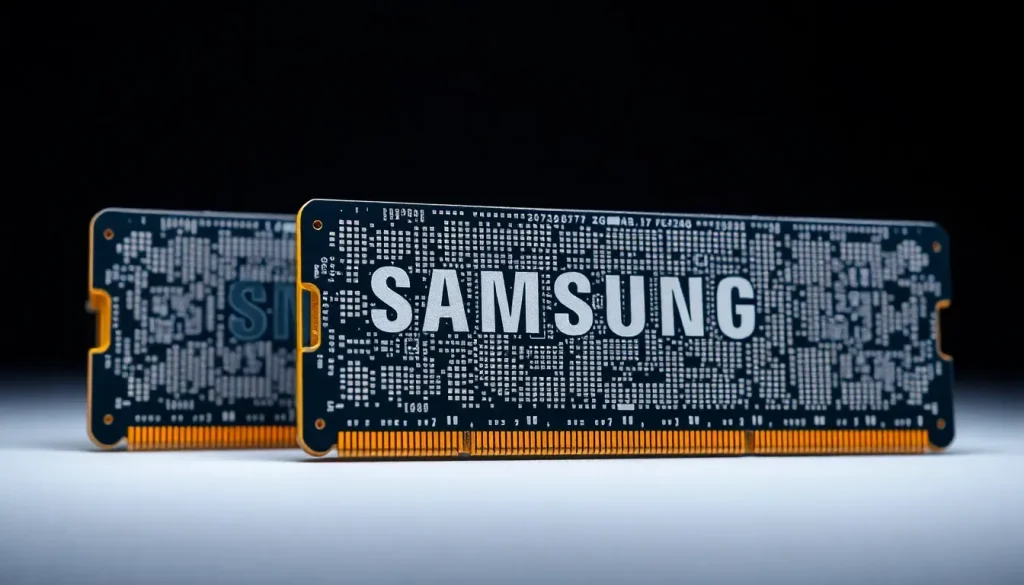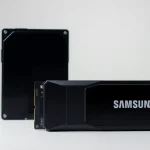Samsung Electronics Q3 2025 Earnings Show Record Revenue from Memory Chips

Samsung Electronics has once again made headlines with its impressive financial performance, showcasing the benefits of the ongoing chip boom. This dynamic environment has not only propelled the company’s revenue but has also highlighted the significant demand for semiconductor products in various sectors.
Highlights of Samsung Electronics Q3 2025 Earnings
The latest quarterly earnings report from Samsung reveals strong results, underscoring the company's robust position in the semiconductor market. Here are the key takeaways:
- Record revenue of 86.1 trillion won (approximately $60 billion), marking a 9% increase year-over-year.
- Semiconductor sales reached 33.1 trillion won ($23 billion), up 13% compared to the previous year.
- Memory chip sales totaled 26.7 trillion won ($18.6 billion), reflecting a remarkable 20% year-over-year growth.
- The semiconductor division achieved an operating profit of 7 trillion won ($4.8 billion).
- Mobile revenue grew to 33.5 trillion won ($23.3 billion), a 12% increase year-over-year.
- Mobile division operating profit was reported at 3.6 trillion won ($2.5 billion).
- Gross profit amounted to 33.5 trillion won ($23.3 billion).
- Gross profit margin stood at an impressive 38.9%.
- Overall operating profit reached 12.2 trillion won ($8.5 billion).
- Operating margin was reported at 14.1%.
Future Outlook for Samsung Electronics
Looking ahead, Samsung Electronics has outlined its strategic focus areas for the upcoming quarters, particularly in its memory and semiconductor divisions:
- The memory business aims to concentrate on advancements in HBM3E, high-density eSSD, 128GB+ DDR5, and 24Gb GDDR7 throughout Q4 2025.
- For 2026, the focus will shift towards HBM4, DDR5, LPDDR5x, and high-density QLC SSD technologies.
- In its foundry segment, Samsung plans to ramp up production using the 2nm process by Q4 2025.
- The foundry division will also prioritize the mass production of the GAA 2nd Gen. 2nm process, as well as performance-optimized 4nm and HBM4 base-die technologies in 2026, while initiating operations at the Taylor fab in the US.
- Samsung Display Corp. will continue to innovate with QD-OLED products.
Understanding the Semiconductor Surge
The remarkable performance of Samsung's semiconductor division can be attributed to several factors, particularly the booming demand for memory chips across various industries. The demand surge is primarily driven by:
- The increased use of artificial intelligence (AI) technologies, which require advanced memory solutions.
- The expansion of cloud computing services, leading to a higher requirement for data center memory.
- The growing adoption of high-performance computing (HPC) applications that utilize energy-efficient memory chips.
As a result, Samsung's semiconductor division has emerged as a critical player in the global market, meeting the needs of a rapidly evolving technology landscape.
Market Dynamics and Competitor Landscape
Samsung’s growth trajectory in the semiconductor sector is not without competition. Major players in the industry, such as Micron, SK Hynix, and Intel, are also vying for market share. However, Samsung's strategic investments in cutting-edge technology and manufacturing capabilities have positioned the company to maintain its leadership.
Recent reports indicate that:
- DDR5 contract prices are anticipated to follow an upward trend throughout 2026, especially in the first half.
- By early 2026, DDR5 profitability is expected to surpass that of HBM3e, further solidifying Samsung's competitive edge.
- The tight wafer capacity for memory chips is a critical challenge, heightening the urgency for technological advancements in production.
Investment Insights: Samsung's Stock Performance
Investors closely monitor Samsung's financial health, given its pivotal role in the semiconductor industry. The company's robust earnings and forward-looking strategies have implications for its stock performance:
- Positive quarterly earnings often lead to increased investor confidence, potentially boosting stock prices.
- Strategic advancements in manufacturing and product offerings can enhance Samsung's market position, attracting more investment.
- The volatile nature of the semiconductor market means that investors must remain vigilant about market trends and competitive dynamics.
Investor Relations: Staying Informed
For those interested in tracking Samsung's performance and strategic initiatives, the company provides resources through its Investor Relations page. This platform offers insights into:
- Quarterly earnings announcements.
- Annual reports detailing financial performance.
- Updates on corporate governance practices and shareholder meetings.
Moreover, the increasing interest in AI technologies is driving demand for advanced chips, aligning perfectly with Samsung's planned production increases. This growing trend is illustrated in the following video, which discusses the surge in AI demand and its impact on Samsung's profitability:
As Samsung continues to innovate and adapt to changing market conditions, its role as a leader in the semiconductor industry appears secure. The company’s focus on advanced technologies and strategic initiatives positions it well for sustained growth in the years to come.




Leave a Reply